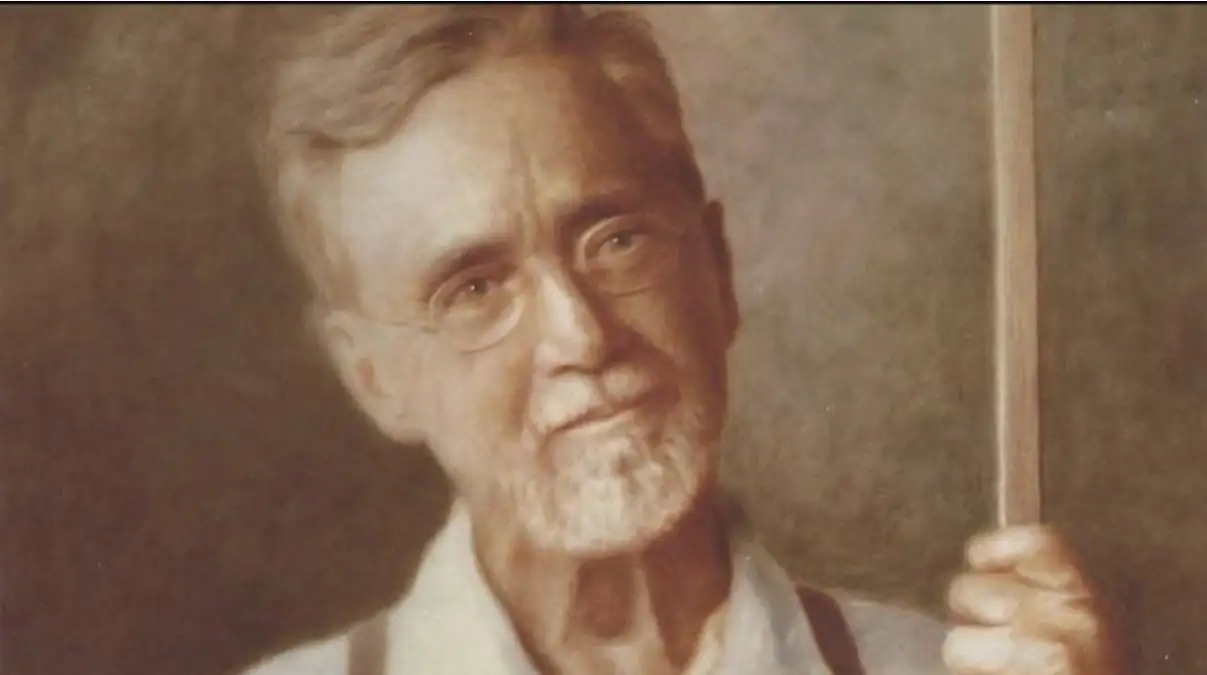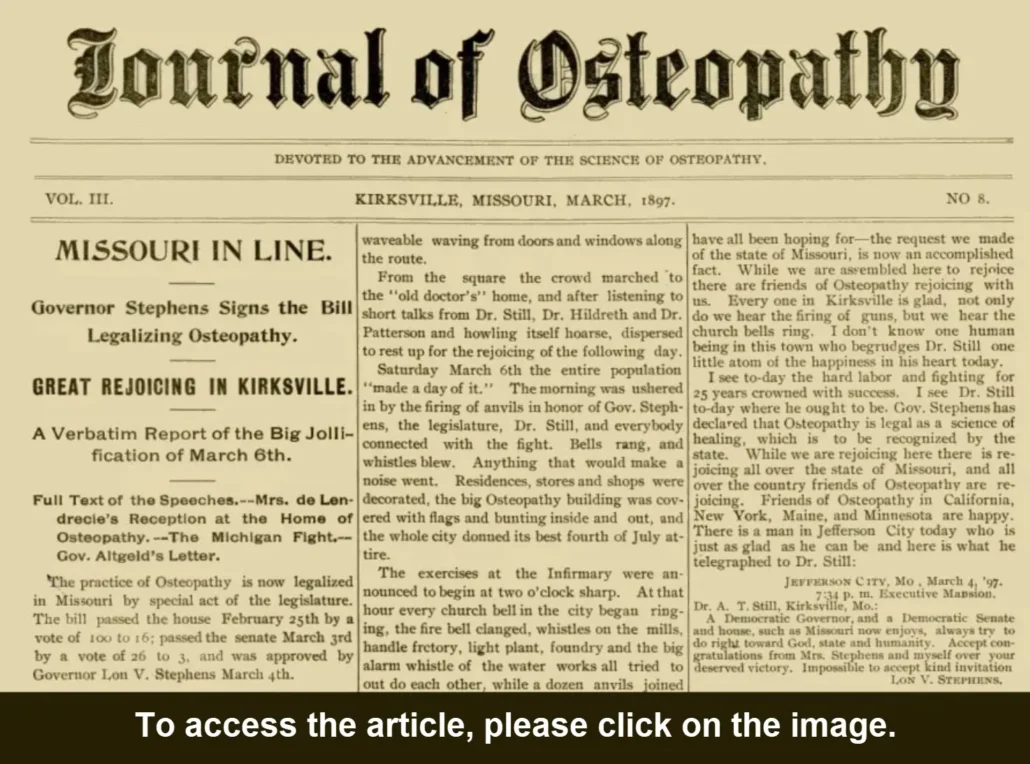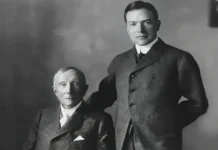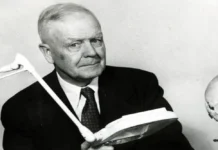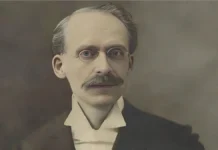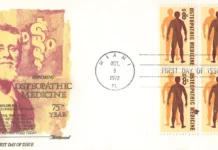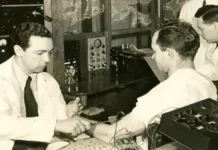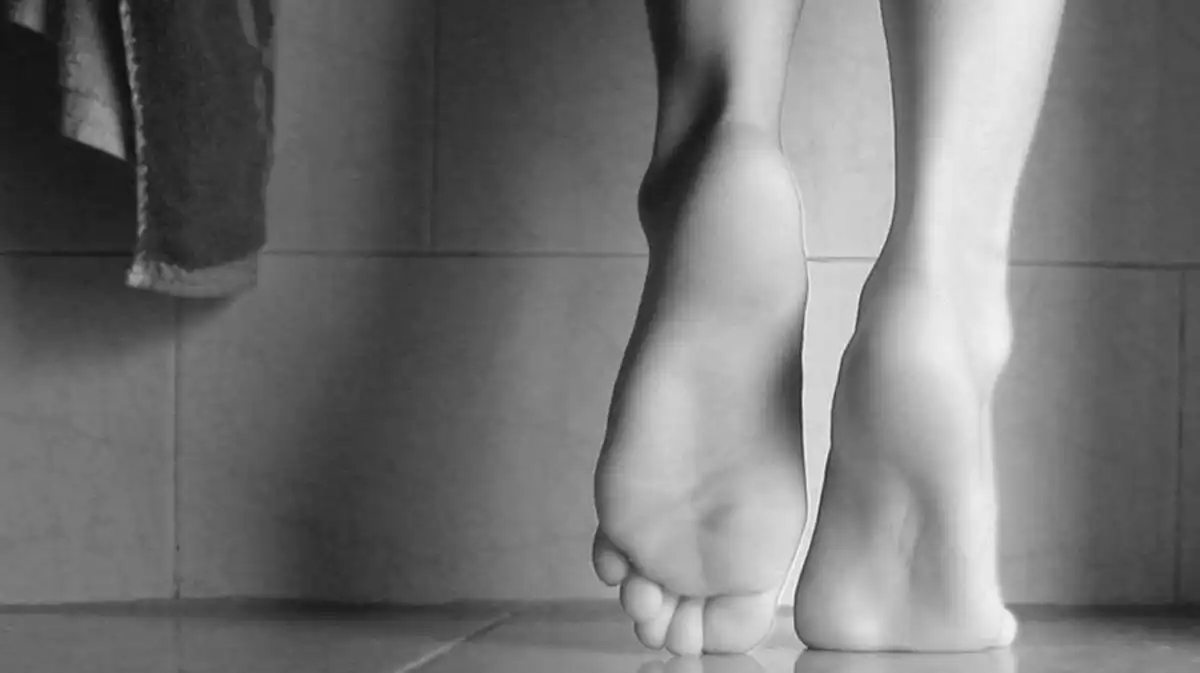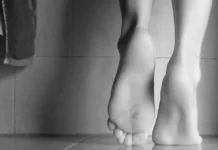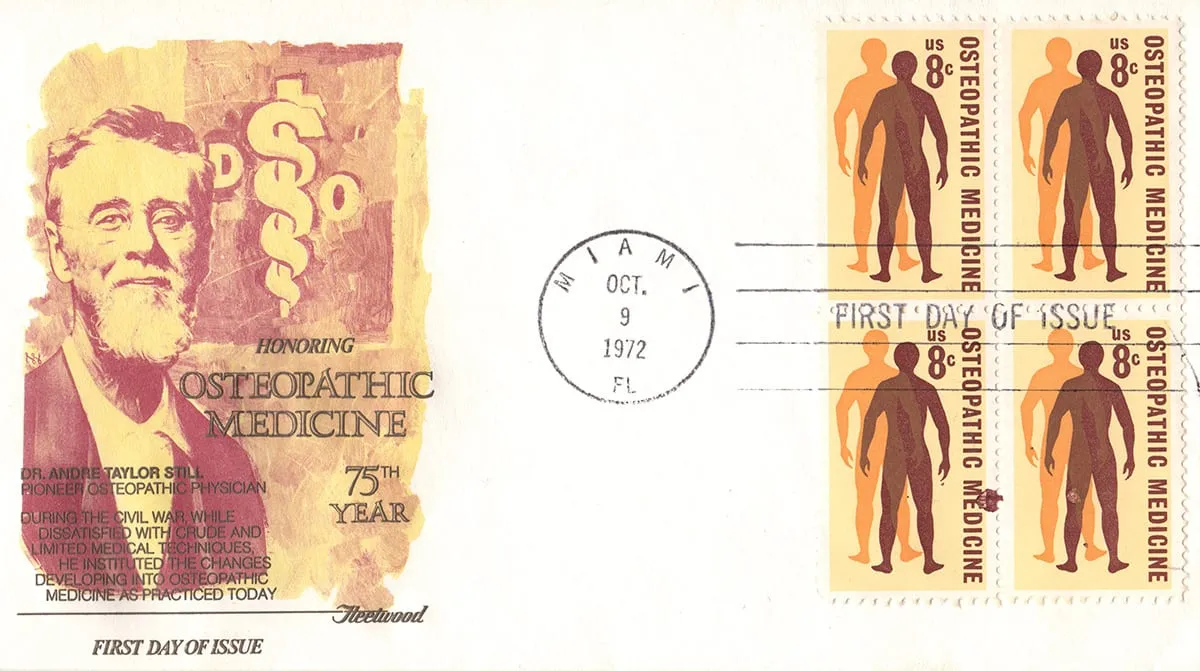The emergence of osteopathy by Andrew Taylor Still in 1879, crystallized by the founding of the first school in 1889, defined a distinct medical discipline. Despite controversial beginnings, osteopathy has evolved, influencing global health education. This medical revolution, initiated by Still, transcends the traditional boundaries of medicine.
Introduction
Andrew Taylor Still remains an exceptional figure, a visionary pioneer whose life was entirely dedicated to the medical revolution. Born in 1828 in Missouri, Still made history by marking an era with the founding of osteopathy, a discipline that would transcend the traditional boundaries of medicine.
The era in which he lived was marked by often archaic medical practices and rudimentary treatments. However, Andrew Taylor Still, originally trained as a doctor, was driven by a revolutionary spirit. His quest for answers to the body’s ailments led him to develop a completely new approach, based on a deep understanding of the relationship between structure and function in maintaining health.
Founding osteopathy in the 19th century, Still introduced the innovative concept that the body has innate self-healing mechanisms. He recognized the critical importance of structural balance to overall health, laying the foundation for a discipline that considers the body as a whole, both physical and emotional.
Andrew Taylor Still’s manual technique aimed to restore this structural balance. His methods, focused on gentle manipulation of tissues and joints, were revolutionary at a time when conventional medicine relied largely on more intrusive approaches.
Andrew Taylor Still’s legacy lies in his unwavering commitment to holistic, natural, patient-centered medicine. His life, punctuated by medical innovation, remains an inspiring reminder of the power of vision and perseverance to shape the future of human health. Today, osteopathy, the fruit of his genius, endures as a discipline respected and practiced throughout the world, testifying to the lasting impact of this bold pioneer.
The Emergence of Holistic Medicine Focused on Integral Health
As his perspectives and clinical understanding evolved, Still created a system of diagnosis and treatment with two main priorities.
- Treatment of the physical mental with emphasis on normalization of body structures and functions. His hallmark was a detailed knowledge of anatomy which became the basis for much of his diagnostic and clinical work, notably diagnosis by palpation and treatment with manipulation.
- The importance of health and wellness to him was balancing mental, emotional and spiritual health, and avoiding alcohol and drugs and other negative health effects.
Still’s concept of a healthy person is insightful. He places his belief in the importance of structural and mechanical integrity within the perspective of a holistic view of a human being within society:
He believed that life existed as a unification of life forces and matter. Since the body is controlled by the mind, it shows determination to meet the needs and goals of the organism, he stated that
Osteopathy… is the law of mind, matter and movement
Andrew Taylor Still’s Philosophy of Health and Body Mechanics
Through his close study of anatomy, he could see the interdependent relationships between different tissues and their components. He observed that each part developed as the body moved, grew, and developed from embryo, to fetus, to newborn, and throughout life. So every tissue, organ and structure is designed for movement.
As movement is the first and only evidence of life, by this thought we are led to that machinery through which life works to accomplish these results. If life is matter in motion, then what is the effect on a part of the body that does not move? Life and matter can be united, and this union cannot continue without obstacles to absolute freedom and movement.
The emblematic anecdote which marks the birth of osteopathy is often associated with a moment of revelation from Dr. Still. While sitting by a river, he observed the movement of the water and realized that life was about movement. He came to the conclusion that health depended on the free circulation of fluids in the body, like the flow of a river. This is how he developed the fundamental principles of osteopathy, emphasizing the structure and function of the body as a whole.
Some people are more susceptible to epidemic diseases than others. Still noticed that resistance to the disease is more apparent in certain individuals with so-called natural immunity, that is to say inherited or acquired. Good circulation in an infected area would allow nature to make its own germicide to eliminate the infectious agent. Still’s philosophy places complete trust in the body’s innate capacity for self-healing. Removing all obstacles to health was not enough, however, as it was the physician’s responsibility to ensure that the body naturally received the chemicals needed to alleviate any pathophysiological processes.
Dr. Andrew Taylor Still believed that the cause of most illnesses was mechanical. So, the treatment must follow the laws of mechanics.
As a result, osteopathy would use manipulative approaches to release bone and soft tissue barriers to nerve and circulatory functions to improve the chances of healing.
Osteopathy: A Holistic Vision of Health
He claimed that mobilizing these structures improves his patients’ outcomes.
However, manipulations were not only applied to relieve musculoskeletal strains and injuries, but also to treat organic diseases.
For example, he found characteristic paraspinal muscle stiffness and other abnormal myofascial tensions in patients with infectious diseases. He noted an improvement in the health of these patients as well when the musculoskeletal system and myofascial effects to normal physiological processes were relieved.
He proposed that to prevent disease, mobilization of all joints of the spine with restricted mobility. Indeed, this will ensure the body of good nervous, blood and lymphatic activity.
Jenner introduced the smallpox vaccine in the 17th century, which was a considerable success.
Dr. Andrew Taylor Still describes the shortcomings of Jenner’s methods, pointing out that many patients who were healthy became disabled or fatally ill. He states his belief that there is a less harmful method of vaccination and calls for Jenner’s methods to be improved. His rejection of drugs and vaccines appeared in the first mission statement for the American School of Osteopathy.
However, in 1910, even when Still was president, the school changed its position and accepted vaccines and serums as part of osteopathic practices. First and foremost, Still clearly believed that osteopathic treatment and the physician should strive to help the patient’s body with a particular problem.
Chronology of his Andrew Taylor Still life
August 18 , 1828: Andrew Taylor Still was born on August 6 in Lee County, Virginia. He grew up in a family of doctors and was exposed to the medicine of the time from an early age.
1849: It is fascinating to explore the marriage of Andrew Taylor Still to Mary Margaret Vaughn. Their union was blessed with five children, marking the beginning of a family that would play a significant role in Andrew’s life and career. Mary Margaret, much more than a companion, proved to be a cornerstone in supporting her husband and contributed substantially to his professional journey. The influence and impact of their relationship on the development of chiropractic and osteopathy cannot be underestimated, making Mary Margaret a key figure in the story of Andrew Taylor Still’s life.
1861-1865: During the American Civil War, Still served as a surgeon in the Union Army. This period of military service profoundly influenced his perspective on medicine.: During the Civil War, Andrew Taylor Still faced exceptional medical challenges as a military surgeon. This experience was instrumental in shaping his medical outlook. Witnessing the suffering and aftereffects of war, Still may have developed a unique understanding of the body’s needs for healing. His observations and field service may have been a catalyst for his future research into the importance of structural balance in overall health.
1864: Andrew Taylor Still’s life is marked by heartbreaking tragedy when three of his children succumb to cerebrospinal meningitis. This painful ordeal profoundly changed his life and pushed him to question the conventional medical methods of the time. The loss of his children becomes a powerful catalyst, propelling Still towards a quest for a deeper understanding of the human body and its mechanisms. It was in this period of grief and questioning that his innovative vision of osteopathy emerged, laying the foundations of an alternative medical approach that transcended established norms. Still’s personal pain thus transformed into a driving force for change that would lastingly influence the course of medicine.
1865-1874: Still explores various alternative medical approaches, seeking answers through his own experiments and observations.: Andrew Taylor Still, faced with frustration with the conventional medical practices of his time, explored various alternative medical approaches. These included hydropathy, diet, bonesett →ʼng, and magnetic healing. These explorations played a key role in the development of Andrew Taylor Still’s alternative medical vision. Convinced of the ineffectiveness and sometimes harmful effects of orthodox methods, Still integrated these approaches into his holistic medical philosophy. These experiments laid the foundation for osteopathy, his revolutionary method focused on manipulating the musculoskeletal system to restore balance and promote healing, establishing the founding principles of modern osteopathy.
1874: Death of his wife Mary Margaret Vaughn, marking a turning point in Still’s life. His search for alternative medical methods intensified.: The evolution of Andrew Taylor Still’s medical philosophy was deeply influenced by the experiences and events of his life, particularly after the death of his wife in 1874. Before this period, Still had already questioned conventional medical practices after the American Civil War, noting their ineffectiveness and harmful effects. However, the tragic death of his wife, three of his children and an adopted child from cerebrospinal meningitis in 1864, was a major emotional catalyst. Deeply affected by this loss, Still questioned not only medical practices, but also the very foundations of orthodox medicine of his time. His disenchantment led him to actively explore alternative medical approaches between 1865 and 1874, including hydropathy, diet, fracture reduction, and magnetic healing. After his wife’s death in 1874, his intensified research and exploration of alternative approaches solidified his rejection of conventional medical methods. Convinced of the need for a more holistic and natural approach, Still developed the fundamental medical philosophy of osteopathy. This is based on the belief that manipulation of the musculoskeletal system can treat a variety of diseases, thereby avoiding the negative side effects of medications. Thus, Still’s personal tragedy played a vital role in the evolution of his medical outlook, prompting him to formulate a revolutionary alternative medical approach that gave rise to osteopathy. This philosophy, developed over the years, has continued to evolve and influence modern medicine.
1875:
Indeed, Andrew Taylor Still is the founder of osteopathy. In the second half of the 19th century, he developed the fundamental principles of this alternative medical approach. Still recognized the importance of the relationship between body structure and health. He emphasized the concept that the body has an innate ability to self-regulate and self-heal when the structure is balanced. This idea forms the basis of osteopathy, highlighting the importance of structural integrity in maintaining health.
1879: Still formally sets out the principles of osteopathy, establishing the basis of his alternative medical philosophy. He began to put his innovative ideas into practice.: Osteopathy, founded by Andrew Taylor Still in 1879, met with a varied initial reception from the medical community and the general public. Initially, the discipline was greeted with some suspicion and skepticism, due to its departure from conventional medical methods of the time. The orthodox medical community was often critical of osteopathy, viewing it as an unscientific and heterodox approach to medical practice. Traditional physicians were sometimes reluctant to accept a discipline that focused on manual manipulation and holistic principles, moving away from more invasive and drug-based medical practices. The general public, however, has shown increasing interest in osteopathy, attracted by the idea of less intrusive treatment methods and the emphasis on the structural balance of the body. Some patients have found positive results with Andrew Taylor Still’s approaches, furthering the popularity of osteopathy. Despite initial challenges, osteopathy gradually gained respectability over the years as qualified practitioners demonstrated the effectiveness of this alternative approach. The creation of osteopathic schools and institutional recognition helped to legitimize the discipline within the medical field. Today, osteopathy is practiced and respected on a global scale, reflecting its positive evolution since its founding.
1889: Foundation of the American School of Osteopathy in Kirksville, Missouri. This school will become the first institution entirely dedicated to the teaching of osteopathy. The establishment of the first school of osteopathy by Andrew Taylor Still in 1889 was a complex process, marked by notable challenges such as opposition from the orthodox medical community, the need to gain institutional recognition, and public persuasion regarding the effectiveness of osteopathy. Despite these obstacles, the American School of Osteopathy enjoyed significant success, founding its principles in 1879, publishing the ideas of Andrew Taylor Still in 1892, and gaining institutional and official recognition in the years that followed. The school played a vital role in the consolidation of osteopathic education in the United States and the gradual acceptance of osteopathy as a distinct medical discipline. Over time, it evolved into a respected educational model, influencing the creation of other schools of osteopathy and contributing to the global integration of this alternative medical approach.
1892:
The publication of “Philosophy of Osteopathy” by Andrew Taylor Still marks an important step in the development and dissemination of osteopathic principles. In this major work, Still sets out in detail his fundamental ideas about osteopathy, including his view of the relationship between body structure and health.
“Philosophy of Osteopathy” has played a crucial role in sharing the key concepts of osteopathy with a wider audience. The principles outlined in this book helped establish the foundations of osteopathy as an alternative medical discipline, highlighting the importance of structural balance to the overall health of the body. This publication also helped to generate interest and recognition of osteopathy as a distinct medical practice.
1894: The American School of Osteopathy’s attainment of higher education status marks a significant step in the consolidation of osteopathic education in the United States. This status gives the school formal recognition as an institution of higher education, thereby strengthening the credibility and legitimacy of osteopathy as an educational field.
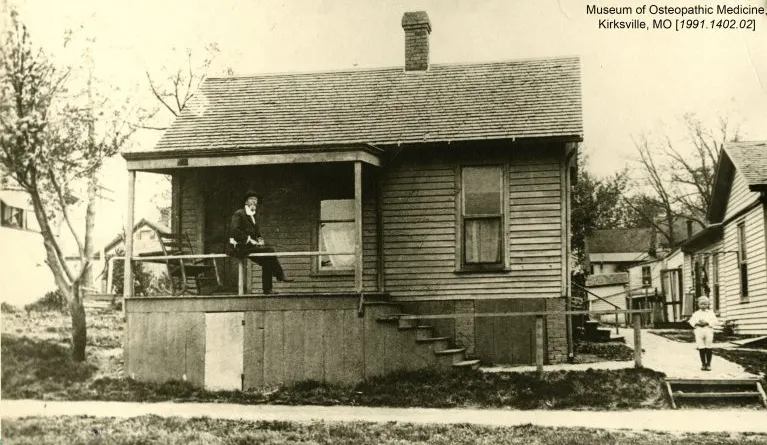
The first building of the American School of Osteopathy in Kirksville, Missouri. Dr. AT Still taught the first classes here in 1892. Museum of Osteopathic Medicine, Kirksville, Missouri [1991.1402.02].
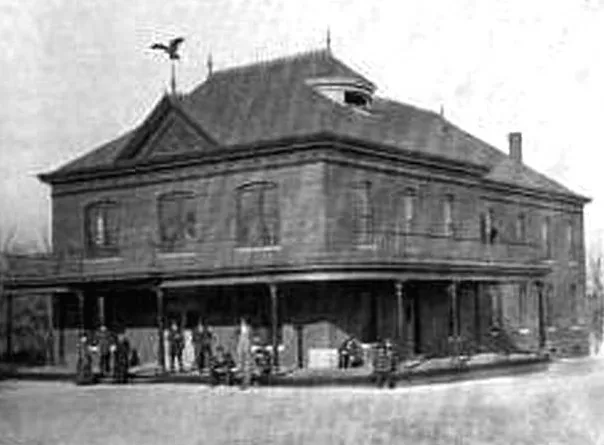
4o mini
With this status, the school was probably able to broaden its educational impact and contribute to the training of osteopathic professionals. It has also played a role in establishing higher educational standards for osteopathic practice in the United States, thereby strengthening the quality of training provided in the field. This consolidation of osteopathic education likely contributed to the growth of the profession and its broader recognition in the health field.

Know all men by these presents, that Mrs. Nettie Hubbard Holmes, having attended a full course of Lectures on and Demonstrations of Osteopathy, and having, after due Examination, been found fully qualified to practice the Art in all its branches, is hereby conferred by me with the title Diplomate in Osteopathy.
Dated and given at Kirksville, Adair County, Mo., this the 1st day of March, Eighteen Hundred and Ninety-Four.
Andrew T. Still, D.O.
President, American School of Osteopathy
J.E. Patterson
Secretary
(Seal of The American School of Osteopathy affixed to the lower-left corner.)
The diploma is ornately designed with a central insignia displaying an eagle perched on a shield surrounded by scrollwork. It emphasizes the completion of a thorough osteopathic education at the institution under the leadership of Andrew T. Still, the founder of osteopathy. The red seal and ribbon provide an official mark of authenticity, reflecting the formal recognition of the recipient’s achievement.


Here is more information about the individuals mentioned:
Dr. Andrew Taylor Still (A.T. Still) – President: is the founder of osteopathy. He established the American School of Osteopathy in Kirksville, Missouri, in 1892. Dr. Still developed the principles of osteopathy based on the belief that the body has an innate ability to heal itself and that the musculoskeletal system plays a crucial role in overall health.
Dr. Charles E. Still (C.E. Still) – Vice-President: Was one of A.T. Still’s sons. He played a significant role in the development and promotion of osteopathy. As Vice-President, he would have been integral to the administration and direction of the school.
Dr. Warren Hamilton – Secretary Treasurer: Served as the Secretary Treasurer, which would have involved managing the financial affairs and records of the school. His role was crucial for the operational and fiscal stability of the institution.
Dr. George M. Laughlin (G.M. Laughlin) – Superintendent of Hospital and Clinic: was a prominent figure in osteopathy and married to one of A.T. Still’s daughters. As the Superintendent of the Hospital and Clinic, Dr. Laughlin oversaw clinical training and patient care, ensuring that students received practical experience in osteopathic techniques.
Dr. A.G. Hildreth – A.T. Still Infirmary, St. Louis: was a prominent osteopath who played a significant role in the expansion and practice of osteopathy. The A.T. Still Infirmary in St. Louis, where he was associated, was an important institution for the dissemination and practice of osteopathic medicine.

Dr. E.C. Link: Information is less readily available, but as a faculty member, he would have contributed to the teaching and promotion of osteopathic principles and practices at the ASO.
Dr. M.E. Clark: details are limited, but his inclusion in the faculty photograph indicates his role in educating future osteopaths and advancing the field through his work at the school.
Dr. F.P. Young: was another key faculty member whose contributions to osteopathy and the ASO would have included teaching, clinical work, and potentially research in the field of osteopathy.
Dr. L. Von H. Gerdine: was part of the faculty team, and like his colleagues, he played a role in the education and clinical training of osteopathic students, helping to establish and disseminate the principles of osteopathic medicine.
Dr. C.H. Hoffman: would have been involved in both academic and clinical aspects of osteopathic education, contributing to the training of students and the development of osteopathic practices.
Dr. George Andrew Still was another of A.T. Still’s sons. He was deeply involved in the early development and promotion of osteopathy. His work at the ASO would have included teaching, administration, and clinical practice, continuing his father’s legacy.

Hon. C.E. Murrell: likely held an honorary position, which indicates his significant support or contributions to the school, though he may not have been directly involved in teaching or medical practice. Honorary members often played roles in advocating for the institution or contributing to its establishment and growth.
Dr. E.G. Starr: was a faculty member who would have participated in the academic and clinical training at the ASO. Faculty members like Dr. Starr were crucial in implementing the osteopathic curriculum and providing practical training to students.
Dr. F.G. Crowley: was part of the faculty team, likely involved in both teaching and clinical supervision. Faculty members such as Dr. Crowley helped to maintain the high standards of education and practice that the ASO was known for.
Dr. Leone Dalton: was a notable faculty member, contributing to the academic and clinical environment of the ASO. Having a woman in the faculty at that time would have been significant, indicating the inclusive nature of the osteopathic community.
Dr. F.P. Pratt: would have been involved in the educational and clinical aspects of the ASO, playing a role in the training and development of osteopathic students. His contributions would have been integral to the dissemination of osteopathic knowledge and practices.
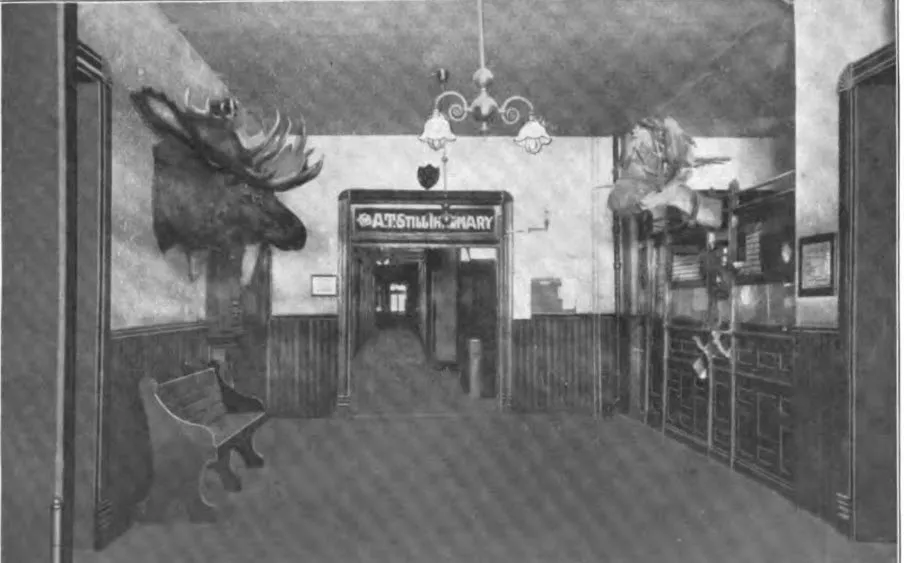
This image features the main entrance of the American School of Osteopathy, providing a glimpse into the early days of the institution.
Key Features:
Main Entrance: The entrance to the ASO is prominently displayed, showcasing the architectural style and design of the period. It serves as the primary access point to the institution, welcoming students, faculty, and visitors.
Taxidermy Wall Hangers: Two large taxidermy wall hangers are visible on either side of the entrance. These decorative pieces reflect a common practice of the era, where taxidermy was used for both educational and aesthetic purposes within institutions.
A.T. Still Infirmary: The entrance to the A.T. Still Infirmary can be seen adjacent to the main entrance. The infirmary was a crucial component of the ASO, providing clinical training and healthcare services. Its proximity to the main entrance highlights its importance within the school’s infrastructure.
Historical Context: The image captures the historical ambiance of the ASO, illustrating the environment in which early osteopathic education and practice were conducted. The combination of academic and clinical facilities underscores the comprehensive nature of the osteopathic training provided at the institution.
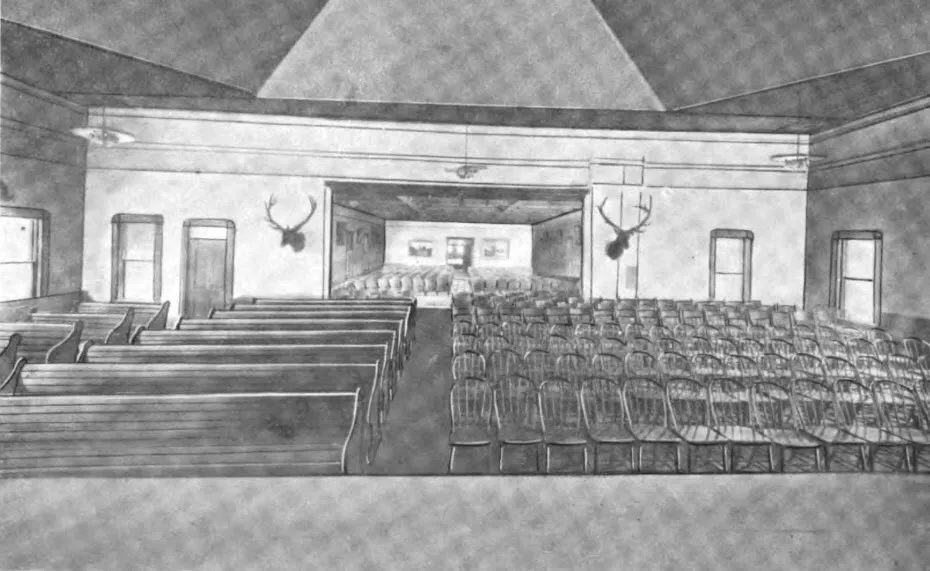
Key Features:
Seating Arrangements: The assembly halls featured a mix of seating styles, with one half comprising church-style benches and the other half furnished with ordinary wooden chairs. This eclectic mix provided ample seating for both formal lectures and informal gatherings.
Lecture Space: Designed to accommodate large groups, the assembly halls were equipped with seating arrangements conducive to learning, with a central podium for lecturers.
Architectural Style: Reflecting the late 19th and early 20th-century design, the halls featured high ceilings, large windows for natural light, and intricate woodwork.
Decorative Elements: The back wall of the assembly halls was adorned with two prominent taxidermy mounts, adding to the period’s common practice of displaying such items in academic settings. These mounts likely symbolized the school’s connection to natural sciences and anatomical study.
Historical Significance: These halls were where pioneering osteopathic physicians, including Dr. Andrew Taylor Still, shared their knowledge and advanced the principles of osteopathy.
Community Hub: Beyond academic use, the assembly halls served as a gathering place for students and faculty, fostering a sense of community and collaboration.
The assembly halls stand as a testament to the rich history and enduring legacy of the American School of Osteopathy, where the foundations of osteopathic medicine were built and nurtured.
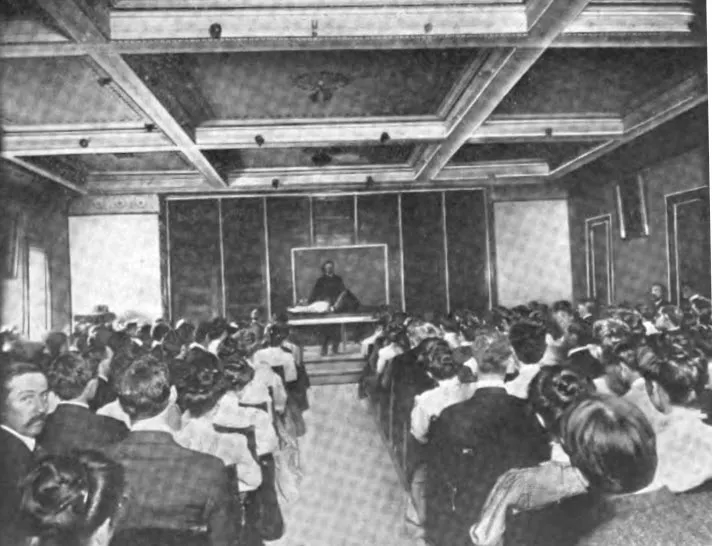
This image captures a moment from a clinical class at the American School of Osteopathy (ASO), showcasing hands-on osteopathic education in action.
Instructor Demonstration: The teacher is seen performing an osteopathic maneuver on a patient, demonstrating techniques to the class. This hands-on approach was integral to osteopathic education, emphasizing the importance of practical skills and direct patient care.
Patient Interaction: The patient lies on a treatment table, illustrating the real-world application of osteopathic principles. This practical experience allowed students to observe and learn effective treatment methods.
Student Engagement: Students are gathered around the table, attentively observing the procedure. This setup highlights the interactive and immersive learning environment fostered at the ASO.
Educational Environment: The clinic class setting is equipped with necessary medical and teaching tools, reflecting the ASO’s commitment to providing a comprehensive and practical education in osteopathy.
Historical Context: Such classes were fundamental in training early osteopathic physicians under the guidance of pioneers like Dr. Andrew Taylor Still, ensuring that students were well-prepared to practice osteopathy.
This image exemplifies the dedication to hands-on learning and the focus on patient-centered care that has been a cornerstone of osteopathic education since the founding of the ASO.

This image showcases Memorial Hall at the American School of Osteopathy (ASO), a significant venue for gatherings, lectures, and ceremonies.
Key Features:
Seating Capacity: Memorial Hall can accommodate approximately 220 people, making it a central location for large events and important gatherings within the school.
Seating Style: The hall features early 1900s theater-style folding seats, reflecting the architectural and design preferences of the era. These seats provide a functional and historically authentic setting for attendees.
Large Paintings: The room is adorned with two large paintings, adding a touch of elegance and historical significance to the space. These artworks likely depict important figures or scenes relevant to the history of osteopathy and the ASO.
Architectural Details: The hall’s design includes high ceilings and ample space, creating an environment conducive to both formal events and educational activities.
Historical Context: Memorial Hall has been a witness to numerous pivotal moments in the history of osteopathy, serving as a venue where pioneering ideas were shared and celebrated.
Memorial Hall stands as a testament to the rich heritage of the American School of Osteopathy, embodying the institution’s commitment to education, community, and the advancement of osteopathic medicine.
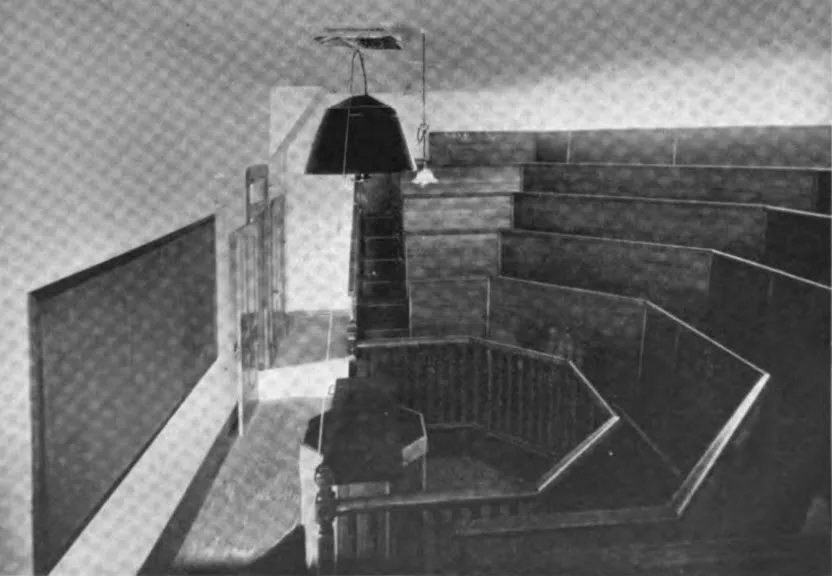
This image showcases the amphitheater at the American School of Osteopathy (ASO), a key venue for anatomy demonstrations and educational lectures.
Key Features:
Seating Arrangement: The amphitheater is designed with tiered seating, allowing a clear and unobstructed view of the central demonstration area. This layout facilitates effective learning and observation during anatomy classes.
Demonstration Area: The central space is equipped for live demonstrations of anatomical structures and techniques. This area is crucial for hands-on learning, providing students with a direct view of anatomical specimens and teaching materials.
Educational Setting: The amphitheater’s design emphasizes the importance of interactive and visual learning in the study of anatomy. It supports both lectures and practical demonstrations, enhancing students’ understanding of complex anatomical concepts.
Historical Significance: The use of an amphitheater for anatomy demonstrations reflects the ASO’s commitment to a rigorous and immersive educational approach, allowing students to engage deeply with the subject matter.
Architectural Style: The amphitheater features classic design elements typical of early 20th-century educational facilities, creating a formal and conducive environment for academic instruction.
This image of the amphitheater highlights the American School of Osteopathy’s dedication to providing a comprehensive and interactive learning experience, crucial for the development of skilled osteopathic practitioners.
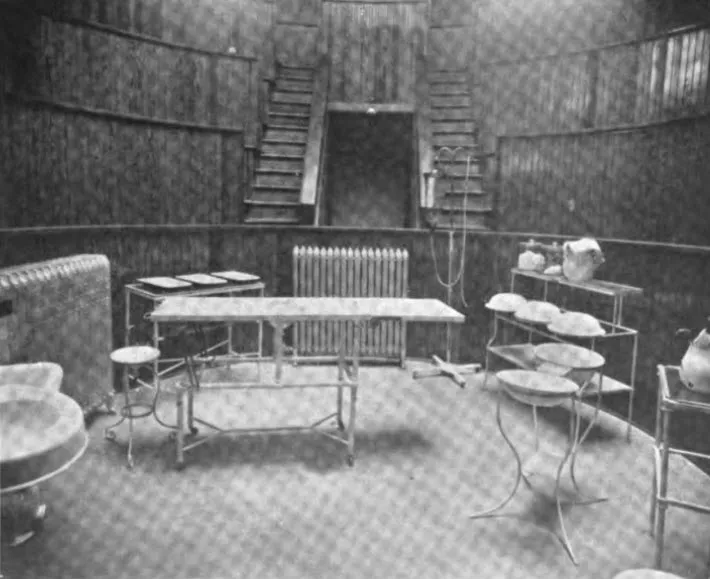
Key Features:
Design and Layout: “The Pit” is designed as a central area or pit within a clinical setting, providing a focused space for performing and observing surgical procedures. Its layout is intended to facilitate both practical surgery and instructional demonstrations.
Surgical Environment: The area is equipped with essential surgical tools and equipment, tailored for performing and studying various surgical techniques. The setup supports both practical training and observational learning.
Student Participation: Students are actively involved in observing and learning surgical procedures, gaining hands-on experience in a controlled and supervised environment. This practical exposure is critical for developing surgical skills and understanding clinical practices.
Educational Purpose: “The Pit” is integral to the ASO’s curriculum, allowing students to witness and participate in surgical procedures. It enhances their understanding of surgical techniques and patient management.
Historical Context: The use of such a specialized area for surgical training reflects the ASO’s commitment to providing comprehensive and practical education in osteopathic medicine, emphasizing the importance of real-world clinical experience.
This image of “The Pit” highlights the American School of Osteopathy’s dedication to integrating practical surgical training with academic instruction, ensuring that students gain valuable experience in a clinical setting.The pit for surgical clinic

This image features a detailed anatomical drawing created by a freshman student in the anatomy class at the American School of Osteopathy (ASO).
Key Features:
Student Work: The drawing showcases the skill and dedication of freshman students in mastering human anatomy. Such detailed work highlights the rigorous training and high standards set by the ASO.
Anatomical Detail: The drawing includes precise depictions of anatomical structures, demonstrating the student’s understanding of human anatomy. This focus on detailed and accurate representation is essential for osteopathic education.
Educational Value: Creating anatomical drawings is a fundamental part of the curriculum, helping students to visually and kinesthetically reinforce their learning about the human body.
Historical Significance: This practice of detailed anatomical drawing reflects the historical emphasis on thorough anatomical knowledge in osteopathic education, as advocated by Dr. Andrew Taylor Still.
Classroom Environment: The drawing represents the collaborative and interactive learning environment of the freshman anatomy class, where students engage deeply with the material under the guidance of experienced instructors.
This drawing is a testament to the rigorous and comprehensive training provided at the American School of Osteopathy, laying a strong foundation for future osteopathic physicians.
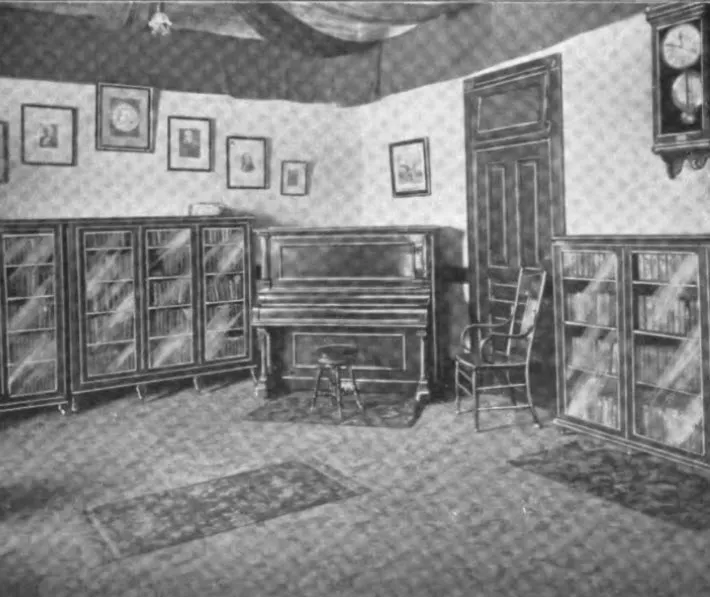
Architectural Design: The library’s design reflects the early 20th-century architectural style, featuring a spacious and well-lit interior conducive to study and research.
Resource Hub: The Sojourner Library houses a comprehensive collection of books, journals, and reference materials relevant to osteopathy and medical sciences. It serves as a crucial support for the academic and research needs of students and faculty.
Study Environment: The library provides a quiet and focused environment for studying and scholarly work, with areas designed for both individual study and group collaboration.
Historical Context: Named in honor of a significant figure or benefactor, the library represents the American School of Osteopathy’s commitment to providing its community with valuable educational resources and a conducive learning environment.
Educational Significance: The library plays a vital role in supporting the educational mission of the ASO, offering access to essential academic resources and fostering an environment of learning and inquiry.
The Sojourner Library stands as a testament to the American School of Osteopathy’s dedication to academic excellence and support for its students and faculty.
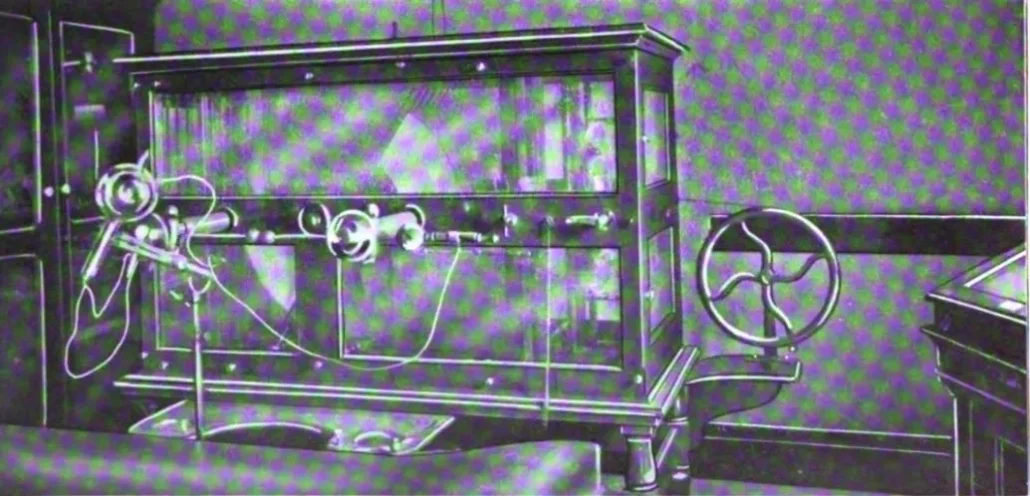
Key Features:
Early X-Ray Machine: The machine depicted represents an early model of X-ray technology, which was revolutionary for its time. It played a crucial role in the development of diagnostic radiology and was instrumental in advancing medical and osteopathic practices.
Radiology Class Setting: The presence of the X-ray machine in a classroom setting underscores the ASO’s commitment to providing students with hands-on experience and exposure to the technology used in diagnosing and treating patients.
Educational Purpose: The machine was used to teach students about radiographic techniques and the interpretation of X-ray images, essential skills for modern osteopathic practice. It reflects the integration of practical learning tools into the curriculum.
Historical Context: Early X-ray machines marked a significant advancement in medical science, allowing for non-invasive examination of internal structures. This historical technology provides valuable insight into the evolution of diagnostic methods in osteopathy.
Impact on Osteopathic Medicine: Incorporating such technology into the curriculum illustrates the ASO’s role in embracing advancements and preparing students for the evolving field of osteopathy.

Formal Attire: The members are dressed in formal attire, reflecting the Glee Club’s dedication to professional and polished performances. Their attire emphasizes the importance of tradition and presentation in their musical endeavors.
Group Composition: The image depicts a well-coordinated group of men, representing the diverse talents and camaraderie within the ASO community. Their participation in the Glee Club highlights the value placed on extracurricular activities and student engagement.
Cultural Significance: The Glee Club was an integral part of campus life, providing students with an opportunity to participate in musical and social activities beyond their academic studies. It reflects the holistic approach to student development encouraged by the ASO.
Historical Context: Formed during a time when extracurricular activities were vital to student life, the A.S.O. Glee Club contributed to the cultural and social atmosphere of the American School of Osteopathy, fostering a sense of community and collaboration.
This image of the A.S.O. Glee Club underscores the role of such organizations in enriching the educational experience at the American School of Osteopathy, showcasing the students’ commitment to both their academic and extracurricular pursuits.The A. S. O. Glee Ccub
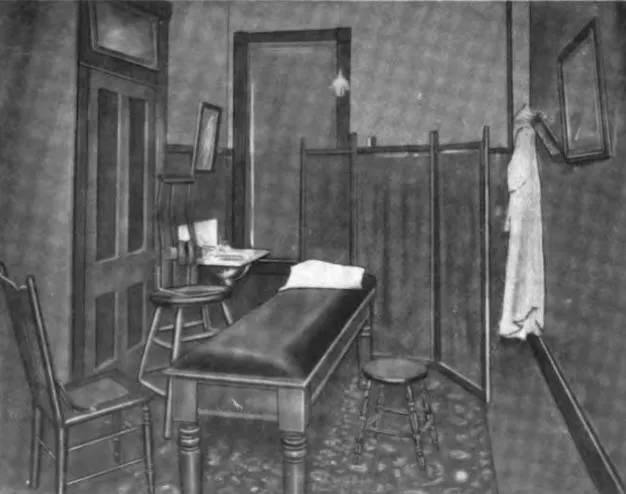
This image showcases a treatment room at the American School of Osteopathy (ASO), providing insight into the clinical environment where osteopathic techniques were practiced and taught.
Key Features:
Clinical Setup: The treatment room is equipped with essential clinical furnishings, including a treatment table, which is central to performing various osteopathic procedures. The setup reflects the functional and practical aspects of osteopathic care.
Equipment and Tools: Visible equipment and tools are indicative of the treatments and assessments performed within the room. These may include diagnostic instruments, therapeutic devices, and anatomical models used for educational purposes.
Design and Layout: The room’s design emphasizes a clean, organized, and professional environment, conducive to both patient care and student learning. This setup supports the practical training of students in a real-world clinical setting.
Educational Context: This treatment room was integral to the hands-on learning experience at the ASO, allowing students to apply theoretical knowledge in a practical environment under the supervision of experienced instructors.
Historical Significance: The image reflects the historical context of osteopathic practice and education at the ASO, showcasing how early osteopathic students were trained in clinical skills and patient care.
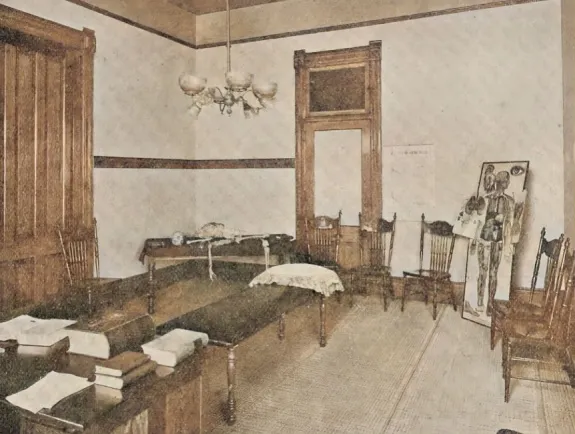
Prominently displayed are anatomical charts and models, including skeletons and manikins, which were essential for teaching the intricate relationships between bones, muscles, and other structures in the human body. These tools reflect the emphasis on hands-on learning and anatomical precision central to osteopathic training at the time.
A reference library visible in the corner reinforces the school’s commitment to combining practical skills with academic knowledge, equipping students with comprehensive resources. The simplicity of the room, with its wooden furniture and basic lighting, highlights the practical and focused approach to osteopathic education. This historical setting provides a fascinating glimpse into the origins of osteopathy and the dedication to advancing health through manual medicine and an understanding of the body’s interconnected systems.

This image captures a ward at the American School of Osteopathy (ASO) Hospital, where senior students engaged in the study and treatment of acute diseases.
Key Features:
Ward Layout: The ward is designed to accommodate multiple patients, reflecting the hospital’s capacity to manage and observe a range of acute medical conditions. The arrangement emphasizes both functionality and patient care.
Student Involvement: Senior students are actively involved in clinical practice within the ward, gaining hands-on experience in diagnosing and treating acute diseases. This practical exposure is crucial for their development as osteopathic physicians.
Clinical Environment: The ward is equipped with necessary medical furnishings and equipment, including patient beds, diagnostic tools, and treatment supplies, supporting the comprehensive management of acute cases.
Educational Focus: The environment allows students to apply their theoretical knowledge in real-world scenarios, under the guidance of experienced practitioners. This practical learning is essential for understanding the complexities of acute medical conditions.
Historical Context: The ASO Hospital’s ward represents an important aspect of early osteopathic education, providing a setting where students could study and treat acute diseases, thereby enhancing their clinical skills and patient care abilities.
This image of the ward at the ASO Hospital highlights the institution’s dedication to integrating practical clinical experience with academic learning, ensuring that students are well-prepared to handle acute medical cases in their future practice.
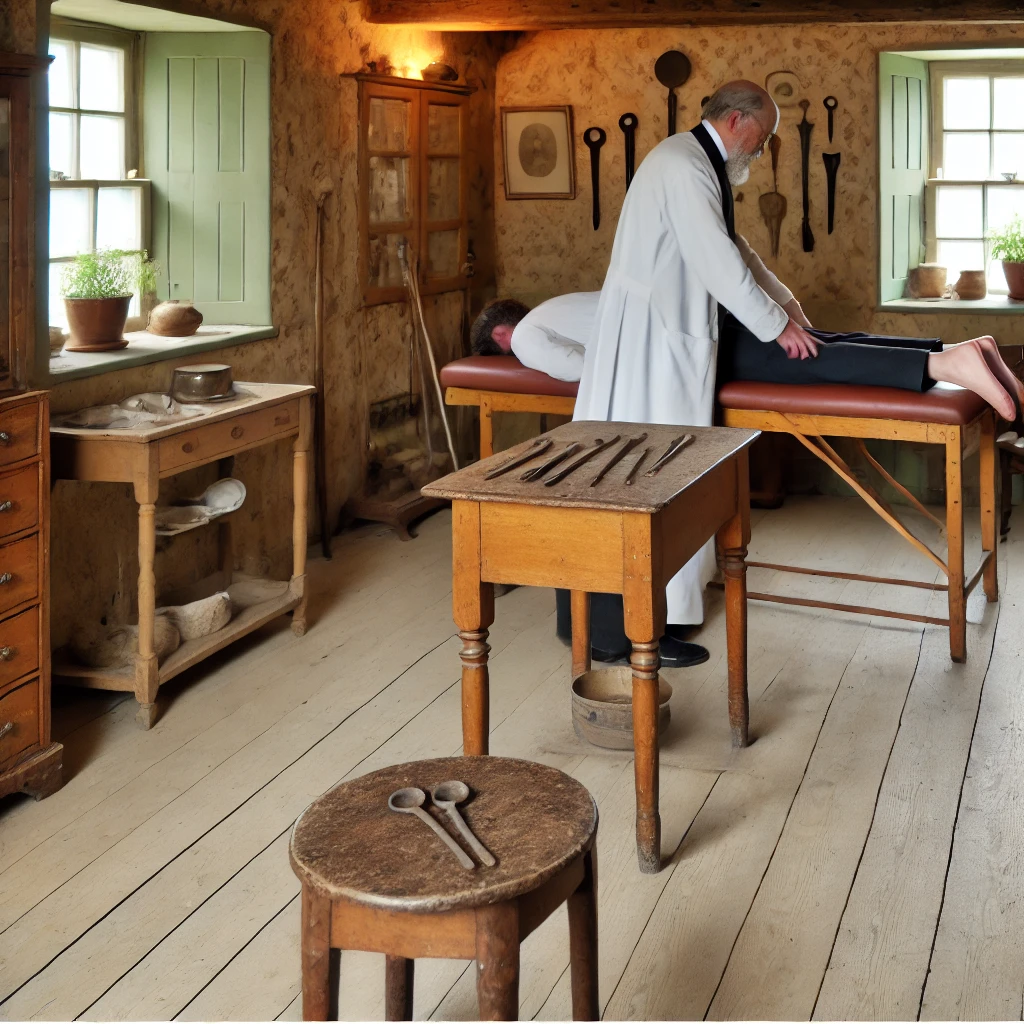
The clinic itself exudes a rustic charm, characteristic of the late 19th century. The wooden floors and furniture are simple yet functional, including a stool and a small table displaying an assortment of metal tools, possibly used for diagnostic or treatment purposes. The walls are adorned with framed prints and various instruments, further emphasizing the medical nature of the space. Sunlight streams through two large, paned windows, illuminating the room and its sparse yet purposeful décor, which includes shelves and cabinets holding supplies and neatly folded linens.
This historical scene highlights the humble beginnings of osteopathy, a practice founded by Andrew T. Still, who revolutionized healthcare by focusing on the body’s natural ability to heal itself. The image captures the essence of dedication, innovation, and care in the early days of this now widely recognized medical discipline.
1896: The granting of a charter to the American School of Osteopathy by the State of Missouri represents a key moment in the history of institutional recognition of osteopathic practice. This established a legal and official basis for the school, thus strengthening the legitimacy of osteopathy as an educational and medical field.
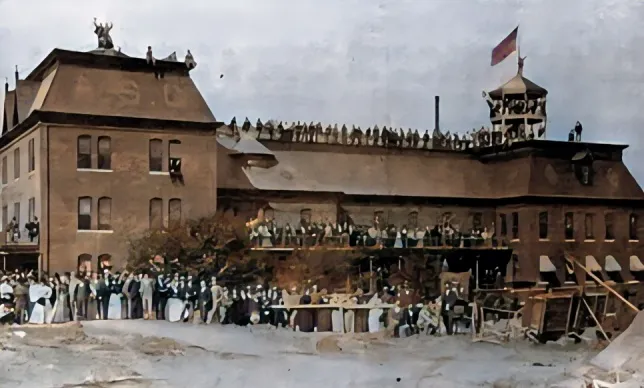

The charter granted by the state of Missouri likely helped further legitimize the osteopathic profession, providing a formal institutional framework for the education and practice of osteopathy. This was arguably an important step towards the wider recognition of osteopathy as a distinct medical discipline.
The official recognition of osteopathic practice by the State of Missouri, with the signing into law by Governor Lon Stephens authorizing osteopathic physicians to practice and allowing students to attend osteopathic medical schools, represents a significant advance in the field of osteopathic medicine. acceptance of osteopathy as a distinct medical discipline. This decision reflects an increased understanding of the value and effectiveness of osteopathy in health care.

Before this law, osteopathic medicine faced considerable challenges in gaining acceptance and legitimacy within the medical establishment. The legislation, signed by Governor Stephens, was a critical step in validating the practice and ensuring that osteopathic physicians could legally provide care and contribute to the healthcare system in Missouri. It also opened doors for aspiring students to pursue education in osteopathic medical schools, thereby fostering the growth and development of the profession.
The signing of this law not only symbolized a victory for osteopathic medicine but also demonstrated a broader commitment to expanding medical education and diversifying the approaches to healthcare. By granting official recognition and support, the state of Missouri played a crucial role in the evolution of osteopathy, paving the way for future advancements and the establishment of a strong educational foundation.
This image captures a transformative moment, highlighting the legal and institutional support that was essential for the growth of osteopathic medicine and its acceptance as a respected and integral part of the medical field.
When a state formally recognizes osteopathic practice, it provides institutional legitimacy to this medical approach, paving the way for fuller integration into the health care system. Osteopathic practitioners can thus benefit from increased recognition of their skills and expertise, strengthening their role within the medical community.
This step toward official recognition, marked by the action of Governor Lon Stephens, also highlights evolving medical perspectives and the growing recognition of osteopathy as a valuable complement to conventional medical approaches. This can help expand patient access to diverse care options and promote a holistic approach to health, considering the relationship between body structure and function.
In sum, the signing of this law by Governor Lon Stephens, allowing official recognition of osteopathic practice by the State of Missouri, represents an important milestone in osteopathy’s journey toward broader acceptance and strengthens its position in as a respected and integrated medical discipline.
1901: Still publishes the second edition of “Philosophy of Osteopathy”, further cementing his ideas and influence in the medical field.
1907: American Association of Osteopathic Colleges founded, highlighting the growth and consolidation of the profession.
1917: The death of Andrew Taylor Still on December 12 in Kirksville, Missouri represents a significant loss to the osteopathic community and medicine in general. As the founder of osteopathy, Still left a legacy deeply rooted in the modern practice of this medical discipline.
His revolutionary vision of medicine, emphasizing the role of the musculoskeletal system in overall health, opened new perspectives in the medical field. The fundamental principles he established continue to influence the way osteopaths approach the treatment of patients, with particular attention paid to finding the underlying causes of symptoms.
Andrew Taylor Still’s influence extends beyond the borders of Kirksville and even Missouri. Its impact extends globally, shaping the practice of osteopathy in many countries. The growing recognition of the importance of the link between body structure and function in the medical field is a testament to the lasting legacy he has left.
In celebrating his life and work, it is essential to recognize that Andrew Taylor Still’s innovative vision continues to inspire osteopathic practitioners around the world, contributing to the continued evolution of medicine towards a more holistic and individualized. His impact is evident in treatment rooms and medical institutions, where the principles he established continue to guide the osteopathic profession toward excellence and in-depth understanding of physical well-being.
Conclusion
The saga of Andrew Taylor Still, marked by the creation of osteopathy in 1879 and the establishment of the first school in 1889, represents a medical revolution that transcended conventional paradigms of health. Despite initial challenges, his holistic vision and perseverance forged a medical discipline respected and practiced throughout the world.
Osteopathy, based on the belief that health arises from the structural balance of the body, was meticulously developed by Still through his experiments and observations. His rejection of orthodox medical methods, reinforced by personal tragedies, led to the bold exploration of alternative approaches. The results of his research, formally presented in 1879 and detailed in “Philosophy of Osteopathy” in 1892, laid the foundations for innovative medical practice.
The timeline of his life, intertwined with Civil War experiences, devastating family losses, and a continued exploration of alternative medical practices, shaped Andrew Taylor Still’s medical philosophy. His belief in the body’s intrinsic ability to self-heal, combined with his holistic approach focusing on the musculoskeletal system, resulted in the creation of the American School of Osteopathy.
The initial reception of osteopathy, characterized by suspicion from the orthodox medical community, was gradually overcome by the clinical successes and institutional establishment of the school. Official recognition by the state of Missouri in 1900 solidified the legitimacy of osteopathy as a distinct medical discipline. Still, throughout his life, continued to refine his ideas, publishing a second edition of “Philosophy of Osteopathy” in 1901.
The founding of the American Association of Osteopathic Colleges in 1907 highlighted the growth and consolidation of the profession, while the death of Andrew Taylor Still in 1917 only strengthened its legacy. His impact extends far beyond his own time, persisting in the global practice of osteopathy.
Thus, the story of Andrew Taylor Still and osteopathy is that of a visionary who, in the face of adversity, created an innovative medical discipline. His legacy lies in a holistic approach that transcended its time, lastingly influencing modern medical practice and global medical education. Today, osteopathy remains a dynamic force, testament to the insight and determination of a man who redefined the way we understand and treat human health.
The brain of man was God’s drug, and contained all the liquids, medicines, lubricating oils, opiates, acids and antacids, and every grade of medicine that God’s wisdom deemed necessary for man’s happiness and health.



